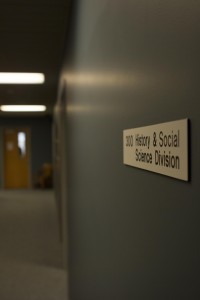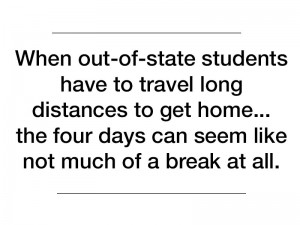Several years back the College transformed its credits system by implementing a required 4- credit hour structure. One of the leading voices of the new system was Dr. Peter Meilaender, political science. The shift was made in order to fulfill what he described as: “Paired desires, faculty would be able to teach more effectively by teaching one less course simultaneously, and students – also taking fewer courses simultaneously – would be able to learn more effectively.” Dr. Linda Mills Woolsey, Dean of the College, further explained, saying, “A lot of study went into the shift and it did reflect a trend among selective liberal arts colleges. We did the best we could with the information we had and from the outset made some exceptions to the rule. We have, however, continued to wrestle with issues inherent in any attempt at a ‘one size fits all’ approach.”
 As of last fall, however, departments struggling with this structuring requirement can freely adjust their courses to better suit their needs.
As of last fall, however, departments struggling with this structuring requirement can freely adjust their courses to better suit their needs.
In November of 2013, the Academic Council approved a motion allowing for departments to freely re-organize their curriculum by whatever structure they feel to be most appropriate for facilitating student learning. The resolution as follows was later approved by the faculty: “The general requirements of a four-credit curriculum are hereby relaxed, permitting departments to propose curricula organized in such a way as to provide the best courses and programs for students.” This motion opened the door for several departments to restructure their programs using three-hour or two-hour structures or a functional combination of 2, 3, and 4-hour courses.
As of yet, the most significant changes are happening within the Psychology department, chaired by Dr. Paul Young. “Different disciplines organize their content in different ways,” said Young. “Organizing psychology by time period, for example, just does not fit the field – this is a more topically organized field. With the 4-hour curriculum, the majors would have to be very large.”
More than 10 psychology courses will be adjusted to a three-hour system as of the fall of 2014. Young emphasized the “focus of the shift back as an attempt to allow students to be “more flexible in students setting up their own schedules.” So as to further prohibit scheduling complications the Psychology Department is also allowing for a 3 plus 1 option for students who need a 4 hour course. Young hoped that the transition would be smooth and students would be provided with “enough different courses to fill out their majors.”
Not all voices are united in support of these types of changes, however. Meilaender’s original support for the four-hour system has not wavered. “It is not obvious to me why varieties of content organization (historical, topical, etc.) point to one hours system or another.” Concerning the strain on professors, Meilaender continues to disagree, explaining that from his perspective, “There is equal demand on your time with 3 four hour classes or with 4 three hour classes – it is simply easier to give your attention to fewer classes.”
While not in opposition to the recent changes, Mills Woolsey similarly pointed out, “The three hour system tends to mean more separate preparations for faculty, and [in the past] failed to satisfy student and faculty desires to create more in-depth courses.”
Preferences aside, the motion by the faculty has created a more flexible code for departments to determine course designations and semester schedules. Next fall, psychology majors and professors will put the old system to the test. Mills Woolsey, when asked to predict this decisions impact on the campus as a whole, summarized concisely: “At this point I envision a move toward a structure that allows for 1,2, 3, and 4 hour courses. I will be interested to see how students in the psychology major respond to the changes.”


